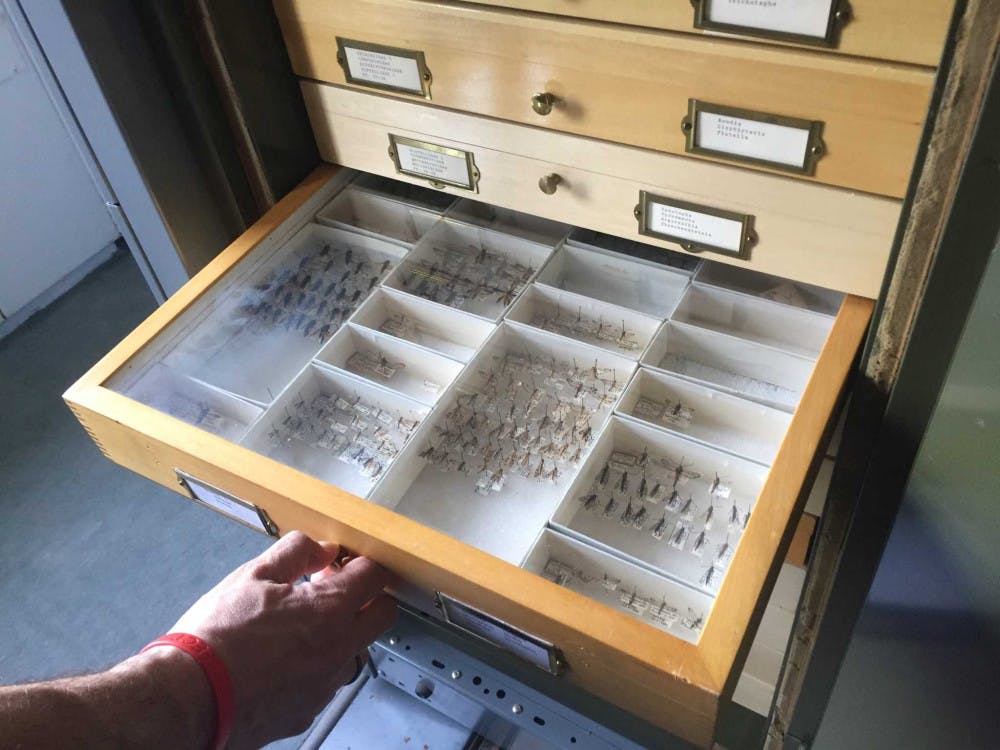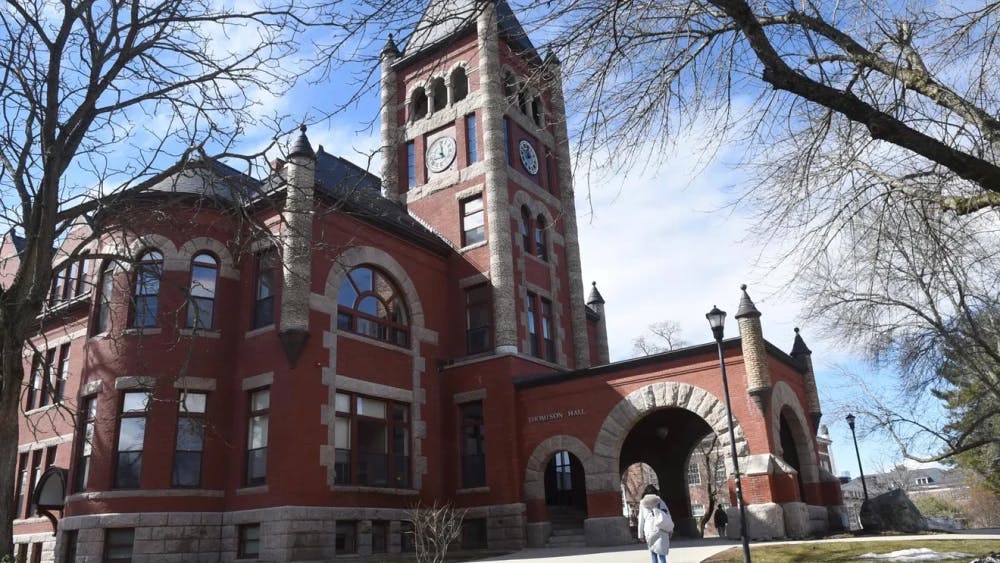On the second floor of Spaulding Hall, there lives a collection of 700,000 specimens, some over 100 years old. The specimens are insects and other arthropods (arthropods have exoskeletons, or a shell covering their body—spiders for example), and they comprise the aptly-named University of New Hampshire’s (UNH) Insect and Other Arthropods Collection.
As described in a grant proposal, the Insect and Other Arthropods Collection began in 1891 when UNH’s predecessor – the New Hampshire College of Agriculture and the Mechanic Arts (NHC) – was still located in Hanover. Two entomologists, C.M. Weed and W.F. Fiske, started the collection with specimens from mainly southern New Hampshire. Many entomologists followed in their stead, donating both personal collections and specimens gathered specifically for NHC’s (and later UNH’s) insect collection.
The collection began to grow quickly around the 1970s, with 300,000 specimens by 1982. In 1982, Dr. Don Chandler, a professor in then the Department of Entomology within the College of Life Sciences and Agriculture, began extensive sampling of insect populations throughout the state.
This collection had 620,000 specimens by 2012, with all sorts of insects: flies, caddisflies (which are different by the typical house or fruit fly), beetles, moths and butterflies. When the Department of Entomology was absorbed into the Department of Biological Sciences (DBS), Chandler and the collection moved there too.
Today, the collection includes over 700,000 specimens, in part due to the bee-collecting help of Dr. Sandra Rehan and her research laboratory in DBS. Dr. Istiván Mikó, hired just this past year, is the manager of the insect collection, as well as a lecturer in DBS. Mikó, along with Chandler, Rehan and others, wrote the previously mentioned grant proposal for digitizing the collection.
Digitization, or putting documents and data online, allows researchers from around the world to easily access UNH’s specimens. Many types of insect researchers rely on collections, such as insect systematists who study different species, or ecologists studying insects’ interactions with their environment.
Insect collections are particularly vital: A 2017 study from Germany found that insect biomass, a metric used to assess insect biodiversity, has declined by 76 percent. Insect species are vanishing, and once a species dies, if it exists in no collection, no longer can science learn from it.
“Basically, there are specimens here that had been collected in the late 19th century, representing species that are either disappeared or are going to be disappearing in the next 20 years, 10 years, and this is the last place where actually you can find them. And if you think evolutionar[ily], it took 50 million years, 25 million years,” to produce these species, Mikó said. “These things are products of basically the history of the world, evolution, and they [are] just disappearing like that.”
But for researchers wanting to study the collection, only 17,000 specimens, or about two percent of the collection, is digitized. Researchers can still physically visit the collection - and many do - but doing so costs time and money.
“If someone wants to study…an indicator species or if someone wants to study a mosquito species…we have this information here.” Mikó said. “But this is here, so if you want to study that, you have to come here, and you have to collect the data.”
UNH’s collection has unique strengths. It contains specimens from a variety of ecosystems, even though its specimens are primarily from the state of New Hampshire, with some from the tropics.
“New Hampshire is one of the most diverse states in the United States,” Mikó said. “I know it sounds weird because it’s a really small state,” but New Hampshire has a variety of ecosystems, from the ecosystems of the White Mountains to the Seacoast beaches, per Mikó. Each ecosystem supports different species and types of insects evolutionarily suited for the environment they live in.
The collection also has specimens that have been identified by world experts, such as Chandler. “You see most of the specimens are identified on [a] species level, and when you read the identification labels, these are the world experts. That makes this collection really valuable,” Mikó said. Insect identification can require microscopic detail, and extensive training and insect biodiversity knowledge, like the knowledge world experts can provide.
Digitization can also help those with visual impairments to study and benefit from the collection. Historically, natural history collections are visual—the specimens are laid out for researchers and audiences to view. The process will provide access to the metadata, or information about each specimen, for people with visual impairments, who can then learn about specimens and their backgrounds. This will complement an annual event the insect collection holds that is geared towards visually impaired people, using 3-D insect models to show insect structures.
Along with digitization, as part of the Spaulding Hall renovation beginning this summer, the collection will be moved to a new wing in the back of the building. The collection, along with UNH’s collection of plants and related organisms in the Hodgon Herbarium, will take up two sides of that wing, with a glass-walled classroom separating the collections. This move will make both collections more available to students and members of the community.
Collections can educate and interest people in a number of biology topics, not just insects and arthropods. UNH’s insect collection, along with the Hodgon Herbarium, Mikó said, is a “really great source that could be used to do outreach…[explaining] basic biology, basic nature history…explain things that everyone should be aware of, but unfortunately education doesn’t deliver these concepts.”
Mikó is excited about the Spaulding Hall addition. “It’s just everything that you can wish [for],” he said. Along with the new space and outreach opportunities, the addition, and the grant, may bring better specimen storage technology.
Until the addition is completed, though, the collection will remain in its present location on the second floor of Spaulding Hall. But it is not off-limits: students are welcome to tour the collection by appointment.
“My aim is to make this collection as visible as it is possible.” Mikó said.














